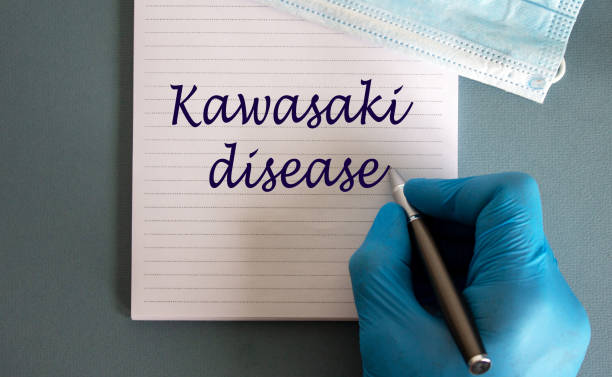Does Kawasaki Disease Ever Go Away in Adults?
Kawasaki disease is the most common form of acquired heart disease in children, and it affects approximately three to five thousand children in the United States each year. Children of Asian ancestry are most likely to contract the disease, but it also affects children of other ethnicities. Kawasaki disease patients need to get diagnosed early. If the condition is not diagnosed in its early stages, it can lead to heart complications in as few as one to four years.
How is Kawasaki disease treated in adults?
Unlike kids, adults with Kawasaki disease are not likely to have immediately obvious symptoms. However, once diagnosed, the condition is usually treatable. Treatment involves medicines that reduce inflammation. In addition to taking medicine that decreases inflammation, the doctor may suggest other tests, such as an echocardiogram to look for any heart damage.
Adults with Kawasaki disease should seek medical attention as soon as possible. The condition usually resolves spontaneously, but if left untreated, it may lead to serious complications. The goal of treatment is to treat the acute inflammation and monitor the patient for aneurysms. If the aneurysms are large, swollen, or occlusive, patients may require coronary revascularization.
Patients with Kawasaki disease are often diagnosed with abnormal heart rhythms. A high white blood cell count may indicate the condition. Heart rhythm problems can be caused by Kawasaki disease, so heart rhythm tests will be conducted to diagnose the condition. An echocardiogram is also performed to check the heart’s health and determine if there are any problems in the coronary arteries.
What triggers Kawasaki disease?
The exact cause of Kawasaki disease is not yet known, but it’s thought that it may be the immune system’s reaction to an unknown virus or a genetic link within the family. This condition is not contagious, but if you or a loved one develops symptoms, it’s recommended to seek medical advice. It can cause a high fever that won’t go down with fever-reducing medications, and it can cause heart trouble. Symptoms usually go away on their own, but they may persist for up to eight weeks.
There is no single test to diagnose Kawasaki disease, so doctors must observe symptoms and obtain additional testing to confirm the diagnosis. These tests may include blood tests for inflammation or an echocardiogram to look for damage to heart vessels. If the symptoms persist, a doctor may recommend a team of specialists, but a general pediatrician can also make the diagnosis. Treatment for Kawasaki disease usually involves medicines that reduce the inflammation in the heart.
Does Kawasaki disease ever go away?
The first step in addressing the question “Does Kawasaki disease ever go away in adults?” is to see a physician. Your doctor can perform an echocardiogram to help determine if your heart is affected by Kawasaki disease. Echocardiograms use high-frequency sound waves to examine the structure and function of the heart. These tests are often performed along with electrocardiograms, which record the electrical activities of the heart muscle. Patients with coronary artery abnormalities may require more frequent echocardiograms and additional cardiac tests.
Initial therapy for Kawasaki disease involves reducing the fever and other inflammatory features. In addition, it aims to prevent myocardial ischemia and coronary thrombosis. Long-term treatment is aimed at maintaining a normal level of blood clotting and platelet function.
What are the three stages of Kawasaki disease?
The disease can be categorized into three stages: acute, subacute, and convalescent. The acute phase, which lasts seven to fourteen days, is characterized by a high fever and other symptoms. These symptoms include red lips, tongue swelling, and joint pain. The disease is most severe in this stage and can result in serious complications.
The disease usually affects children younger than 5 years old. Acute Kawasaki syndrome typically causes a fever lasting five days or more and can be accompanied by other symptoms such as a virus or a vector-borne infection. It can also result from a hypersensitive drug reaction. The disease often begins with a desquamating rash on the palms and soles, and can also cause painful erythema and peripheral edema. It can also present with symptoms of pneumonitis.
Children with Kawasaki disease require long-term follow-up care. Several echocardiograms will be done to monitor the heart’s function and structure. The results of these tests are often used to determine the best treatment for the child. If the child has coronary artery abnormalities, more frequent echocardiograms and other tests may be needed.
Is Kawasaki disease painful?
The symptoms of Kawasaki disease may vary depending on the person. For some, it can be as mild as red eyes and irritability. For others, it may be more severe. Either way, it is essential to get tested for this condition, as it can lead to heart damage to blood vessels. A physician can diagnose Kawasaki disease with a physical exam and blood tests. They may also perform an echocardiogram to check for inflammation of the heart. Usually, Kawasaki disease is treated with a course of medications that reduce inflammation.
Kawasaki disease is usually a seasonal disease, occurring in the winter or early spring in North America. It is the most common cause of acquired heart disease in children. If left untreated, it can damage the heart, resulting in aneurysms. It can also result in a high fever and other complications. Fortunately, Kawasaki disease is highly treatable, and if diagnosed early enough, most patients recover within 10 days.



